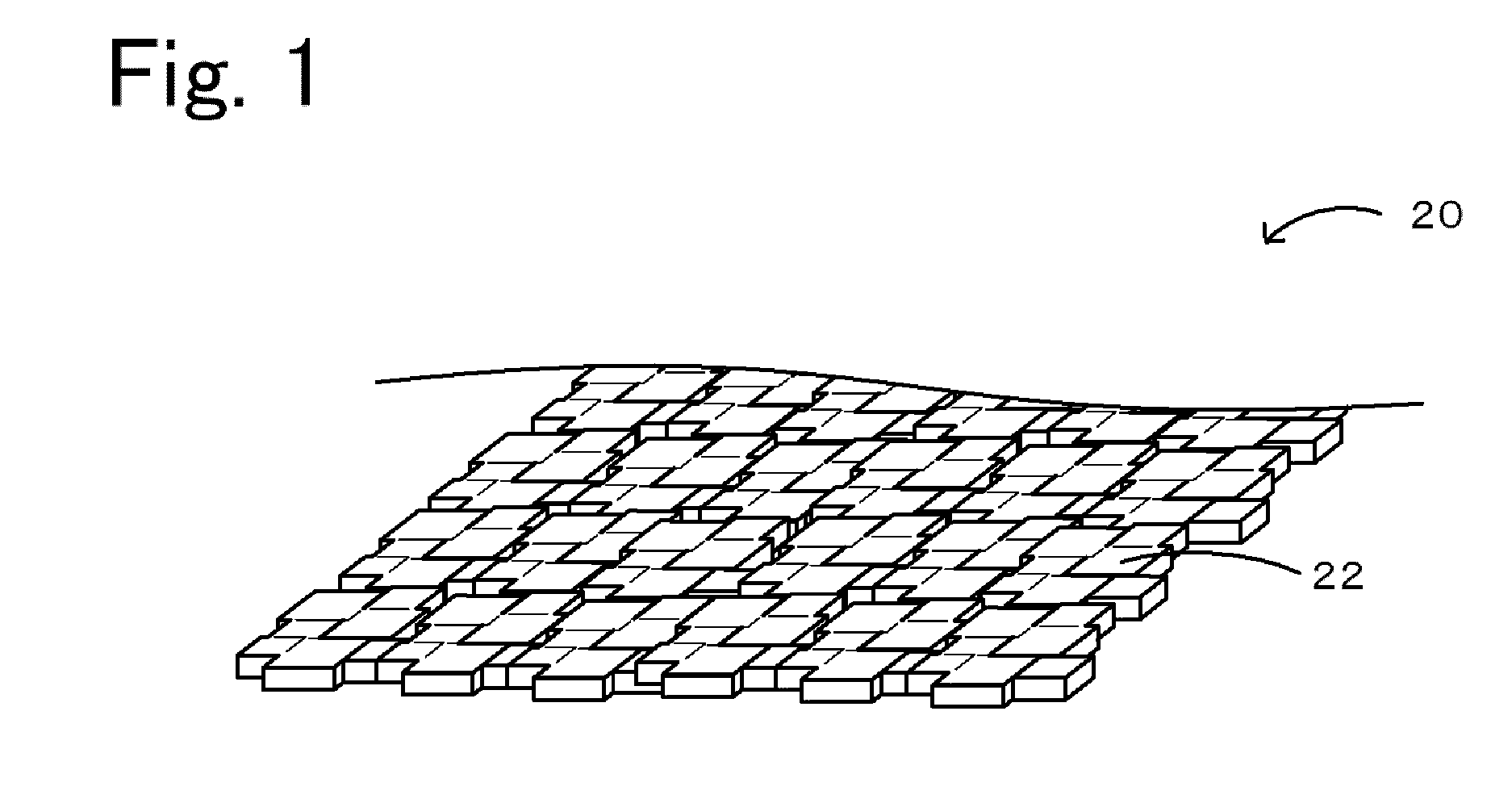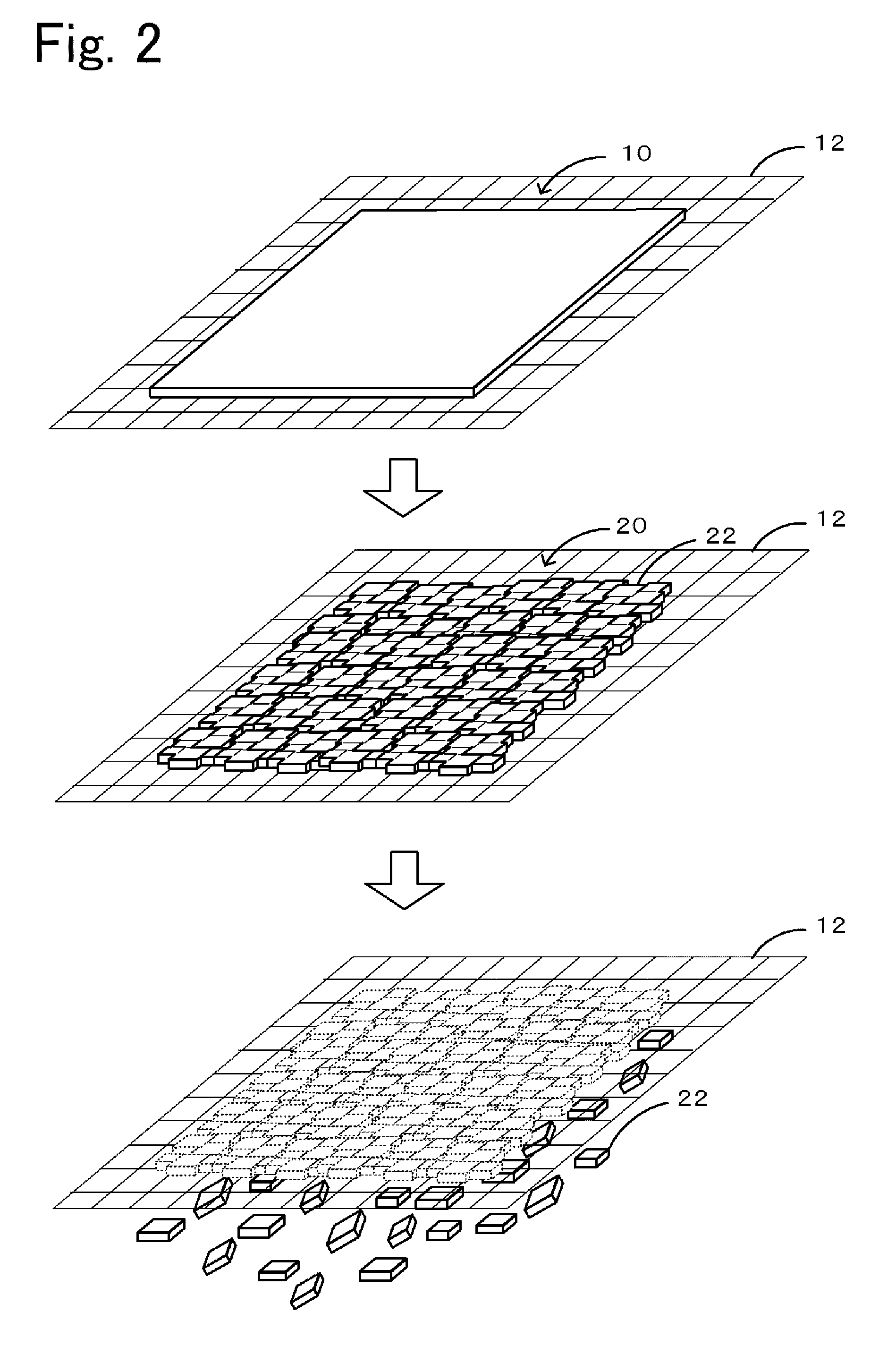Ceramic sheet and method for producing the same
a ceramic sheet and ceramic technology, applied in the field of ceramic sheets, can solve the problems of requiring a large amount of energy, cumbersome process, long firing time, etc., and achieve the effects of reducing energy consumption during production, increasing density, and further enhancing crystallographic orientation
- Summary
- Abstract
- Description
- Claims
- Application Information
AI Technical Summary
Benefits of technology
Problems solved by technology
Method used
Image
Examples
examples
[0046]Experimental examples in which ceramic sheets are specifically produced will be described below.
[0047](Synthesis Step of Synthesizing Inorganic Particles)
[0048]Powders (Li2CO3, Na2CO3, K2CO3, Nb2O5, and Ta2O5) were weighed so as to satisfy the composition {Li0.07(Na0.5K0.5)0.93}A / B [Nb0.9Ta0.1]O3 (A / B=1.00). The weighed powders, zirconia balls, and ethanol as a dispersion medium were placed in a plastic pot, and wet mixing and pulverization were performed using a ball mill for 16 hours. The resulting slurry was dried using an evaporator and a dryer, and then calcination was performed at 850° C. for 5 hours. The calcined powder, zirconia balls, and ethanol as a dispersion medium were subjected to wet pulverization using a ball mill for 40 hours, followed by drying using an evaporator and a dryer. Thereby, powder of inorganic particles composed of {Li0.07(Na0.5K0.5)0.93}A / B [Nb0.9Ta0.1]O3 (A / B=1.00) was obtained. The average particle diameter of the resulting powder was measured...
experimental examples 2 to 8
[0052]A ceramic sheet of Experimental Example 2 was formed as in Experimental Example 1 except that the shaped body was fired in a volatilization-suppressing state in which the volatilization of the volatile component was suppressed. The firing in the volatilization-suppressing state was performed in a state in which green shaped sheets (size: 5 mm×40 mm, thickness: 100 μm) composed of the same shaping raw materials as those for the sheet-like shaped body were placed on the setter, on which the sheet-like shaped body was placed, outside the four sides of the sheet-like shaped body so as to surround the sheet-like shaped body, and a quadrangular plate made of zirconia (size: 70 mm square, height: 5 mm) was further placed thereon. In such a manner, the space around the sheet-like shaped body was minimized, and the same shaping raw materials as those for the sheet-like shaped body were allowed to coexist so that the atmosphere around the sheet-like shaped body was filled with the vapor...
experimental examples 9 to 16
[0053]A ceramic sheet of Experimental Example 9 was formed as in Experimental Example 1 except that, in the raw material synthesis step, the raw materials were mixed such that the A / B ratio was 1.20. Furthermore, a ceramic sheet of Experimental Example 10 was formed as in Experimental Example 9 except that, in the firing step, the shaped body was fired in a volatilization-suppressing state in which the volatilization of the volatile component was suppressed. Furthermore, a ceramic sheet of Experimental Example 11 was formed as in Experimental Example 9 except that, in the firing step, the shaped body was fired in a temperature range of 600° C. (degreasing temperature) or higher, at a temperature-rising rate of 40° C. / min. Furthermore, a ceramic sheet of Experimental Example 12 was formed as in Experimental Example 11 except that, in the firing step, the shaped body was fired in a volatilization-suppressing state in which the volatilization of the volatile component was suppressed. F...
PUM
| Property | Measurement | Unit |
|---|---|---|
| thickness | aaaaa | aaaaa |
| thickness | aaaaa | aaaaa |
| temperature | aaaaa | aaaaa |
Abstract
Description
Claims
Application Information
 Login to View More
Login to View More - R&D
- Intellectual Property
- Life Sciences
- Materials
- Tech Scout
- Unparalleled Data Quality
- Higher Quality Content
- 60% Fewer Hallucinations
Browse by: Latest US Patents, China's latest patents, Technical Efficacy Thesaurus, Application Domain, Technology Topic, Popular Technical Reports.
© 2025 PatSnap. All rights reserved.Legal|Privacy policy|Modern Slavery Act Transparency Statement|Sitemap|About US| Contact US: help@patsnap.com



